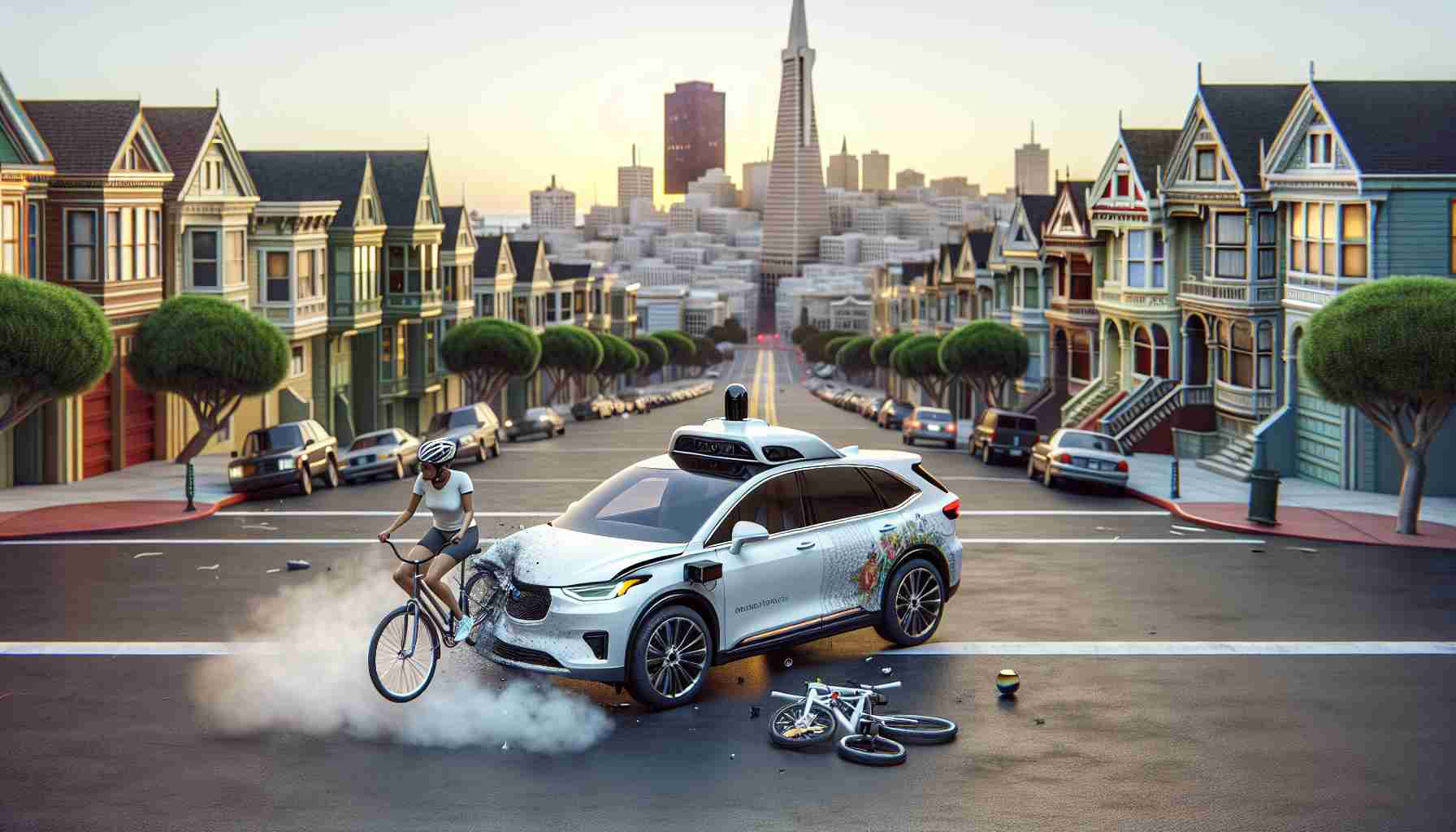In a recent incident in San Francisco, a Waymo One self-driving vehicle struck a bicyclist at an intersection. Fortunately, the cyclist only sustained minor scratches and was able to leave the scene on their own, according to a company spokesperson. Waymo has been in contact with the relevant authorities regarding the incident.
The collision occurred when the bicyclist followed a large truck through the intersection and turned in front of the autonomous vehicle (AV). The cyclist was momentarily obscured by the truck and became fully visible only when they made the left turn into the path of the Waymo One. Despite the vehicle’s heavy braking, it was unable to avoid the collision.
This incident brings to mind a similar case that occurred last October, when a Cruise autonomous vehicle struck a pedestrian in San Francisco, causing serious injuries. An independent investigation revealed that the pedestrian was propelled into the AV’s path by a human-driven vehicle that initially hit her. The AV’s misclassification of the collision led to a pullover maneuver that dragged her to the curb.
Following the Cruise incident, the company’s driverless permits were suspended in California, and a federal investigation was initiated. Cruise also issued a voluntary recall of its cars with the National Highway Traffic Safety Administration.
Waymo, on the other hand, holds one of three permits in California that allow the deployment of autonomous vehicles without a human safety driver behind the wheel. Operating a fleet of 250 robotaxis in the Bay Area, Waymo is actively working to expand its driverless service to Los Angeles and Austin, Texas.
These incidents demonstrate the ongoing challenges faced by self-driving technology in navigating complex urban environments. As autonomous vehicles continue to develop, it is essential for both companies and regulators to prioritize safety measures and learn from these incidents to enhance the safety and reliability of self-driving technology.
Frequently Asked Questions (FAQs)
1. What happened in the recent incident involving Waymo One in San Francisco?
In the recent incident, a Waymo One self-driving vehicle collided with a bicyclist at an intersection. Fortunately, the cyclist only sustained minor scratches and was able to leave the scene on their own.
2. Was Waymo in touch with the authorities regarding the incident?
Yes, Waymo has been in contact with the relevant authorities regarding the incident.
3. How did the collision occur?
The collision occurred when the bicyclist followed a large truck through the intersection and turned in front of the autonomous vehicle. The cyclist was momentarily obscured by the truck and became fully visible only when they made the left turn into the path of the Waymo One. Despite the vehicle’s heavy braking, it was unable to avoid the collision.
4. What was the previous similar incident involving Cruise in San Francisco?
Last October, a Cruise autonomous vehicle struck a pedestrian in San Francisco, causing serious injuries. An investigation revealed that the pedestrian was propelled into the AV’s path by a human-driven vehicle that initially hit her.
5. What actions were taken by Cruise after their incident?
Following the incident, Cruise’s driverless permits were suspended in California, and a federal investigation was initiated. Cruise also issued a voluntary recall of its cars with the National Highway Traffic Safety Administration.
6. How does Waymo’s situation differ from Cruise’s?
Unlike Cruise, Waymo holds one of the three permits in California that allow the deployment of autonomous vehicles without a human safety driver. Waymo is actively operating a fleet of 250 robotaxis in the Bay Area and is working to expand its driverless service to Los Angeles and Austin, Texas.
7. What do these incidents indicate about self-driving technology?
These incidents highlight the challenges faced by self-driving technology in navigating complex urban environments. They emphasize the need for companies and regulators to prioritize safety measures and learn from these incidents to improve the safety and reliability of self-driving technology.
Key Terms and Jargon:
– Autonomous Vehicle (AV): A vehicle capable of operating without human input or control, relying on sensors, cameras, and artificial intelligence to navigate and make decisions.
– Robotaxis: Autonomous taxis that operate without a human driver.
– Permits: Official authorizations or licenses granted to companies or individuals by regulatory bodies to operate autonomous vehicles.
Suggested Related Links:
– Waymo – Official website of Waymo, a self-driving technology company.
– National Highway Traffic Safety Administration – Official website of the National Highway Traffic Safety Administration, which oversees vehicle safety in the United States and investigates incidents related to autonomous vehicles.
The source of the article is from the blog jomfruland.net

